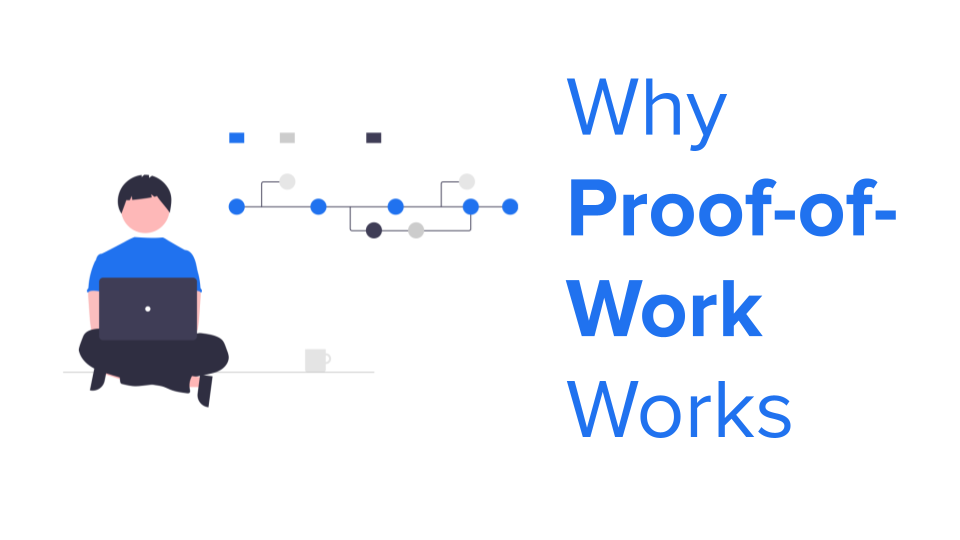Bitcoin’s proof of work protocol provides security to the network’s transactions, which is crucial. However, two weeks ago, Elon Musk announced that Tesla would suspend the purchase of its cars using Bitcoin. The announcement cited increased use of fossil fuels for Bitcoin mining as the primary reason for this decision.
It is possible for both the above statements to be true simultaneously. While PoW is undoubtedly an important part of the Bitcoin promise, we cannot ignore its shortcomings, or attempt to improve upon them. This week, we’re doing a special, two-part blog series – talking about the pros and cons of proof-of-work.
Karan Parsnani, front-end developer at ZebPay begins by setting the context for Proof of Work.
Proof of Work Explained
Proof of work (PoW) is a form of cryptographic zero-knowledge proof in which one party (the prover) proves to others (the verifiers) that a certain amount of a specific computational effort has been expended. Verifiers can subsequently confirm this expenditure with minimal effort on their part. The concept was invented by Cynthia Dwork and Moni Naor in 1993 as a way to deter denial-of-service attacks and other service abuses such as spam on a network by requiring some work from a service requester, usually meaning processing time by a computer.
These are the first few lines of the wikipedia link when you google Proof of Work. Now that we can be really certain that a whole lot of you did not understand anything, we’ll try to make it a bit easy.
Blockchain quite simply is a chain of blocks. Each block has data/transactions/information which needs to be secured. To secure the block a hashing function is used to calculate an output. But to reach that output, you need to solve a problem, let’s say puzzles. To solve these complex puzzles/algorithms, a lot of computational power is required.
Because a lot of computational power is required,- although it doesn’t mean this but for ease of use you can say – it acts as a ‘proof’ that ‘work’ was done to secure this block. Once an output is received, the other nodes in the network confirm that this works and with this verification, that block is secured. Since, there’s a lot of work going on to secure the network, it becomes trusted. Also, because you do all this work, you should be rewarded and rightly so. The people who do this calculation are called miners; the process is called mining and the reward is BitCoin, but that’s another conversation.
Do we really need it?
The goal of proof-of-work is to prevent users from printing extra coins they didn’t earn, or double-spending. Double-spending is a risk that the digital currency can be spent twice. Unlike physical cash, digital assets consist of a file that can be duplicated or falsified. If users were able to spend their coins more than once, it would effectively make the currency worthless.
We usually have banks take care of our accounts. It keeps track of how much money each person has. For ‘A’ to send money to ‘B’, the bank simply checks if ‘A’ has that amount and deducts it and credits ‘B’ with that amount. In crypto, proof of work provides that solution.
It is a transparent consensus algorithm. Misbehaviour of a miner on the network may result in him/her being cut off from the network altogether. Also because it’s consensus, miners broadcast the details of their transactions when they add new blocks to the network. Once this broadcast is made, the nodes leave what they’re doing to verify the transaction for double spending.
Everyone has the same records, so these miners have to compete with thousands of others to earn that reward.
Now I know…
Proof of work helps to protect the network against numerous different attacks. A successful attack would require a lot of computational power and a lot of time to do the calculations and therefore it would be inefficient since the incurred cost would be greater than the potential rewards for attacking the network.
You know what they say, the longest chain is the honest chain. Bitcoin and Ethereum are the top 2 crypto currencies and both of them use POW. No wonder they are valuable.
Other important technologies that use POW are LiteCoin, Monero, Decred and everybody’s favorite DOGE. Not financial advice!
Because there are a lot of transactions happening on these chains, there’s a lot of computational power required. Hence, the time taken and the value. But, the reward here is security.
Oh, what’s Proof of Stake then?
Proof of Stake is another consensus algorithm. Instead of going into the argument about what’s more secure, we’re going to tell you how different it is.
While proof of work is a requirement to define an expensive computer calculation, In proof of stake – the creator of a new block is chosen in a deterministic manner, depending on it’s wealth or ‘stake’.
In proof of stake there’s no block reward, so, the miners take the transaction fees unlike in proof of work, where a reward is given to the first miner who solves each block’s problem.
Apparently, the argument is proof of work is more centralized because miners with more computational power have a greater chance of winning the mining reward. Proof of stake however, rewards those who contribute to the network by freezing their coins proportionately to the amount they have invested.
We’re going to leave the conclusion to you about what’s better. As long as the chain is secure, it’s good for the community.

